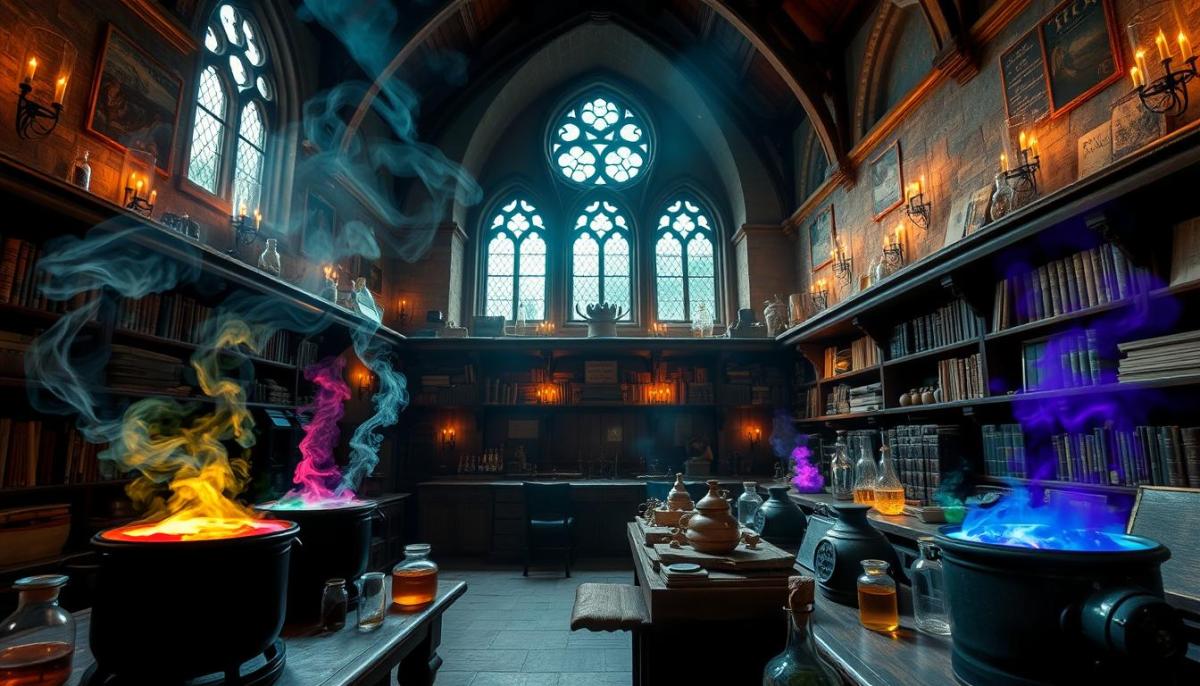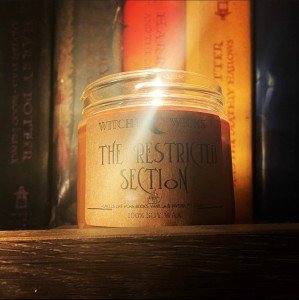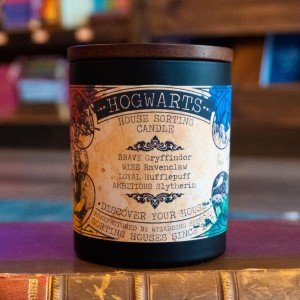Ever wondered what makes the wizarding world so enchanting? Among spells and magical creatures, one element stands out: the art of brewing. These concoctions aren’t just plot devices—they’re woven into the fabric of the series, shaping destinies and sparking imagination.
Take the Polyjuice Potion, for example. It lets characters transform into others, creating moments of suspense and humor. Then there’s the Draught of Living Death, a brew so powerful it mimics death itself. First introduced in the sixth book, this potion becomes crucial in pivotal plot twists.
Mastering these elixirs isn’t just about following recipes. Characters like Snape and Slughorn reveal how skill in this craft signals intelligence and ambition. Their expertise often tips the scales in critical moments, proving that precision matters as much as magic.
Historically, these mixtures borrow from real-world alchemy and folklore. The Draught of Living Death, for instance, echoes ancient myths about suspended animation. By blending fantasy with tradition, the series gives its lore a relatable depth fans adore.
Key Takeaways
- Magical brews drive major storylines and character decisions
- The Draught of Living Death symbolizes high-stakes consequences
- Potion mastery reflects strategic thinking and emotional depth
- Cultural references ground fantasy elements in real history
- Iconic mixtures like Polyjuice redefine identity exploration
Introduction to the Wizarding World of Potions
The secret to Hogwarts' magic isn’t just wands—it’s cauldrons. Imagine a classroom where bubbling brews blur the line between science and sorcery. For first-years like Harry Potter and Ron, their initial encounter with Severus Snape’s strict instructions turned simple ingredients into high-stakes lessons. Hermione’s quick thinking saved their shrinking solution from disaster, proving even geniuses face challenges here.
One legendary concoction steals the spotlight: the Polyjuice Potion. Brewing it demands precision—moonstone shavings, lacewing flies stewed for 21 days, and a dash of someone’s DNA. When Harry and Ron botched their attempt in Moaning Myrtle’s bathroom, the hilarious (and hairy) aftermath showed why this elixir isn’t for amateurs.
Not all potion-makers play by the rules. Enter Fred and George Weasley, the mischievous duo who turned classrooms into comedy clubs. Their Skiving Snackboxes, packed with nausea-inducing treats, became legendary. Yet beneath the pranks lay genuine skill—their inventions required mastery Snape himself might grudgingly respect.
The Polyjuice Potion isn’t just a plot device. It mirrors the series’ deeper themes: identity, trust, and the risks of transformation. Even Fred and George’s antics highlight how creativity thrives within strict magical frameworks. These brews aren’t mere liquids—they’re stories in a vial, waiting to unfold.
From Harry Potter’s first potions class to Fred and George’s chaotic genius, this craft shapes Hogwarts’ heartbeat. Every stir, simmer, and sip reveals why magic lives in both the wand and the cauldron.
The Rich History of Potion-Making at Hogwarts
You might be surprised to learn that magical brews existed centuries before Hogwarts’ founding. Early practitioners mixed herbs and enchanted elements, creating remedies that blurred the line between medicine and mystery. By the 10th century, these practices evolved into structured teachings—laying the groundwork for the complex craft we see in the wizarding world today.
Evolution of Potions Over the Years
Ancient recipes focused on survival: healing salves, strength tonics, and sleep-inducing draughts. Hogwarts transformed this practical knowledge into an art form. Take the Draught of Living Death—a medieval formula refined by alchemists to mimic suspended animation. When a 14th-century student accidentally brewed it too strong, the resulting "living death" state inspired safer brewing protocols.
Modern innovations demand precision. Moonstone measurements must be exact, and stirring directions followed to the second. This shift from rustic remedies to laboratory-like precision shows how the craft matured alongside magical theory.
Restricted Section 100% Soy Wax Candle
Bring the magic of Hogwarts into your home with this enchanting soy wax candle
Product information
$29.00
Product Review Score
4.73 out of 5 stars
138 reviewsProduct links
Influential Potion Masters
Three figures shaped Hogwarts’ approach:
- Horace Slughorn: Revitalized outdated recipes, emphasizing creative adaptation
- Severus Snape: Introduced rigorous safety standards after a living death incident in 1975
- Zygmunt Budge (12th century): Authored foundational texts still used in classes
Their legacies prove that progress in the wizarding world often simmers in cauldrons before making history.
Unveiling the Magic: Key Ingredients and Their Mystical Qualities
Imagine a pantry where crushed moonstones shimmer like stardust, and dried herbs whisper secrets older than Hogwarts itself. The magic of legendary brews begins with these elements—each one a puzzle piece in alchemical artistry.
The Role of Rare Ingredients
Take the Ashwinder egg, a fiery component in love potions. One miscalculation, and romantic infatuation becomes uncontrollable obsession. During a sixth-year potions class, students learned this firsthand when a mislabeled jar caused Neville’s Amortentia to emit smoke resembling Devil’s Snare.
Hermione Granger’s success often hinged on preparation. Her meticulous notes on powdered bicorn horn—a volatile ingredient in Polyjuice—prevented disaster when others overlooked its reaction with lacewing flies. “Stir counterclockwise thrice, not twice,” she’d insist, proving mastery demands more than memorization.
Even common items transform under precise conditions. The Shrivelfig’s peel, when harvested under a waxing moon, becomes the difference between a flawless Draught of Peace and a cauldron-melting catastrophe. Slughorn once remarked, “A true brewer respects ingredients as collaborators, not tools.”
From Amortentia’s rose thorns to Felix Felicis’s fizzing essence, these elements test even seasoned wizards. As Hermione Granger demonstrated, triumph in the potions class comes from understanding each ingredient’s soul—not just its shelf life.
Exploring potions in harry potter: A Comprehensive Guide
What if I told you some magical mixtures hold power over life itself? From immortality brews to identity-altering elixirs, these creations shape destinies in ways even wizards rarely anticipate. Let’s uncover the stories simmering beneath their surfaces.
Iconic Brews and Their Legendary Origins
The Elixir of Life tops our list. Crafted by Nicolas Flamel in the 14th century, this legendary liquid grants immortality—but at a cost. Its recipe requires the Philosopher’s Stone, a relic Voldemort desperately sought. Unlike temporary fixes, this elixir demands perfect timing: one sip every three months, or the drinker ages rapidly.
Then there’s the Polyjuice Potion, infamous for its role in Barty Crouch Jr.’s deception. Stealing someone’s form isn’t just creepy—it’s risky. Brew it wrong, and you’ll sprout scales instead of hair. Just ask Hermione, who spent weeks in the hospital wing after a botched batch.
| Brew | Purpose | Key Risk |
|---|---|---|
| Elixir of Life | Immortality | Dependency on Stone |
| Draught of Living Death | Suspended animation | Permanent coma if overdosed |
| Polyjuice Potion | Physical transformation | Partial mutations |
Side effects often drive the plot. Remember when Barty Crouch impersonated Mad-Eye Moody? His reliance on Polyjuice nearly exposed him—each dose lasted only an hour. These unintended consequences remind us: magic always demands balance.
Whether chasing eternal youth or disguising identities, these mixtures prove that power comes with peril. Their stories linger long after the last drop vanishes.
Ageing and Transformation: Potions that Alter Time and Appearance
What happens when teenage wizards try to cheat time? Enter the Ageing Potion—a risky brew that temporarily alters one’s physical form. While most students avoided Snape’s advanced classes, Fred and George Weasley saw opportunity. Their infamous attempt to bypass the Triwizard Tournament’s age limit became legendary, proving even clever plans can backfire spectacularly.
Ageing Potion and Fred & George’s Experiment
The twins’ scheme involved a hastily brewed batch meant to add decades to their appearance. Instead, they sprouted patchy beards and raspy voices—a hilarious yet cautionary tale. “We’ll consider it a success,” George later joked, “if you ignore the flaming eyebrows.” Their mishap highlights how transformation elixirs demand more than boldness.
Other mixtures walk finer lines. The Wolfsbane Potion, for instance, eases lycanthropy’s torment but requires precise timing. One misstep, and the drinker risks losing their humanity entirely. Similarly, the Draught of Peace calms nerves but induces lethargy if overdosed—a lesson Hermione learned during O.W.L. exams.
- Physical changes often outlast the brew’s effects (hello, orange hair)
- Emotional toll compounds risks—ask Remus Lupin about full moons
- Regulatory gaps in magical law leave room for reckless experiments
For those curious about these mixtures, the complete list of magical brews reveals how they straddle innovation and danger. Whether chasing eternal youth or momentary calm, one truth remains: altering nature’s course always exacts a price.
House Sorting Candle
Discover which Hogwarts house you're truly meant for with our enchanting House Sorting Candle!
Product information
$18.25
Product Review Score
4.71 out of 5 stars
110 reviewsProduct links
Love and Infatuation: The World of Amortentia and Other Love Potions
Have you ever smelled something so intoxicating it made your heart race? That’s Amortentia for you—the most powerful love elixir known to witches and wizards. Unlike ordinary infatuations, this brew doesn’t just spark attraction. It rewires senses, making the drinker obsess over whoever they see after tasting it. Imagine catching whiffs of your crush’s perfume mixed with fresh parchment, even when they’re miles away.
How Love Potions Create Powerful Obsessions
The danger lies in its subtlety. Amortentia mimics genuine emotion so well that victims rarely realize they’re enchanted. Romilda Vane learned this the hard way when she tried slipping a dose to potions harry in sixth year. Instead of winning his affection, she accidentally bewitched Ron—leading to a cringe-worthy scene involving poisoned chocolates and a lovesick slug-vomiting spell.
Psychological studies at the Ministry reveal these mixtures target the brain’s reward centers. They flood drinkers with dopamine, creating dependency faster than liquid luck grants confidence. One anonymous Auror confessed, “Breaking a love potion’s hold feels like detoxing from a cursed addiction.”
Risks and Misadventures in Potion Handling
Then there’s George Weasley, whose “Weasleys’ Wizard Wheezes” once sold a “Love at First Sight” tonic. Customers reported hilarious side effects—one witch became smitten with her own reflection for a week. George later admitted, “We thought it’d be harmless fun. Turns out, hearts aren’t as durable as dungbombs.”
Even experts stumble. A mislabeled vial of liquid luck once caused a Hogsmeade bartender to serve Felix Felicis instead of mead. Patrons spent the night making reckless bets, convinced they’d “feel lucky.” Galleons were lost, but the tale became legend at Three Broomsticks.
These brews remind us: magic can’t force true connection. As potions harry taught in Snape’s class, the finest mixtures demand respect. Whether it’s George Weasley’s pranks or Amortentia’s allure, the line between enchantment and chaos remains thinner than a unicorn hair.
Healing and Restoration: Potions that Mend and Revive
When disaster strikes at Hogwarts, it’s not always a spell that saves the day—sometimes it’s a steaming cauldron of liquid hope. Healing brews like Skele-Gro and Mandrake Restorative Draught turn catastrophe into comeback stories, one agonizing sip at a time.
Skele-Gro and Bone Regeneration
Imagine regrowing an entire arm overnight. That’s Skele-Gro for you—a pungent potion that rebuilds bones from nothing. Students who’ve endured its effects describe the process as “like swallowing molten lava… but with more crunching sounds.” The secret? Ground dragon claw, which triggers rapid cellular growth. Just ask the boy who lived through a Basilisk attack.
Mandrake Restorative and Healing Draughts
Petrified by a deadly gaze? The Mandrake Restorative Draught reverses even magical paralysis. Brewing it requires mature Mandrake roots, whose screams could shatter glass. “Timing is everything,” Severus Snape once sneered during a lesson. “Harvest too early, and you’ll cure hiccups instead of death.”
| Potion | Purpose | Key Ingredient | Risk |
|---|---|---|---|
| Skele-Gro | Bone regeneration | Ground dragon claw | Excruciating regrowth |
| Mandrake Restorative | Cure petrification | Mature Mandrake root | Deafening screams during prep |
Severus Snape’s classes drilled safety into students—a lesson Felix Felicis enthusiasts often ignored. While liquid luck boosts confidence, healing draughts demand precision. After all, no amount of fortune can un-shrivel a botched Shrivelfig.
Transformation Magic: The Intricacies of Polyjuice Potion
What does it take to become someone else for an hour? The answer lies in one of the most complicated brews ever created. You’d need lacewing flies stewed precisely 21 days, shredded fluxweed, and a dash of your target’s DNA. Miss a step, and you might end up with claws instead of fingers—just ask Hermione Granger.

The drinker doesn’t just swap appearances. Their voice shifts, muscles reshape, and even fingerprints change. But here’s the twist: emotions bleed through. When Ron impersonated Draco, he felt flashes of his rival’s arrogance. “It’s like borrowing someone’s skin,” he later confessed, “but their thoughts creep in too.”
| Stage | Risk | Outcome |
|---|---|---|
| Brewing | Ingredient decay | Partial transformation |
| Consumption | Emotional overlap | Identity confusion |
| Duration | Time limit | Sudden reversion |
Hogwarts strictly regulates this concoction. Students need signed permits to handle boomslang skin—a rule established after Fred Weasley “borrowed” some for a prank. Even Snape admitted, “The margin for error is thinner than a unicorn’s eyelash.”
Yet its value in espionage is unmatched. Barty Crouch Jr. maintained his Mad-Eye disguise for months, though complicated brews demand constant vigilance. One missed dose could’ve exposed him during Dumbledore’s surprise inspections.
Transformation magic isn’t just about skill—it’s about nerve. As Hermione once noted, “The cauldron doesn’t care if you’re scared. It only cares if you’re precise.” Whether for mischief or survival, Polyjuice remains a testament to magical ingenuity… and its razor-thin safety margins.
Potions of Luck and Power: From Felix Felicis to Strength Enhancers
What if a single sip could rewrite your fate? Enter Felix Felicis—the golden liquid that bends probability in your favor. Unlike simple charms, this draught sharpens instincts, making every choice feel effortless. “It’s not luck,” Slughorn once explained. “It’s clarity disguised as fortune.”
Liquid Luck and Its Impact on Outcomes
Harry’s success in retrieving Slughorn’s memory wasn’t magic—it was chemistry. The ingredients—Ashwinder eggs, Occamy eggshells, and crushed squid ink—work like neural catalysts. They boost dopamine, creating unshakable confidence. When a person drinks it, their brain filters out doubt, turning risky moves into calculated wins.
But balance is key. Too much squid ink causes reckless overconfidence. In 1996, a Ministry intern overdosed and tried to duel a dragon. “Felix doesn’t make you invincible,” warned Hermione. “It makes you feel invincible.”
Other power-boosting draughts follow similar rules. Strength enhancers use powdered graphorn horn, but overbrew it, and muscles lock up permanently. The trick? Timing the simmer to exactly 33 minutes—a lesson Fred Weasley ignored during his “super strength” phase.
These mixtures prove magic mirrors psychology. As one unsuspecting person learns, true power lies not in the ingredients, but in mastering their dance within the cauldron.
Rare and Lesser-Known Potions from the Magical Archives
Did you know Hogwarts' archives hide brews that even seasoned wizards fear? Beyond Amortentia and Felix Felicis lies a shadowy world of experimental elixirs—each with quirks that’d make Snape raise an eyebrow. Let’s crack open those dusty tomes.
Exploring Obscure Brews and Their Effects
Take the Mist of Forgotten Voices. This silvery liquid erases specific memories for exactly 33 minutes. Sixth-year students in advanced classes learn to brew it using ghost tears and powdered murtlap tentacles. But get the ratios wrong? You might forget your own name until sunrise.
Then there’s Sorrow’s Embrace Draught—a controversial mix banned after the 1920s. Designed to numb heartbreak, it instead amplified emotions in 70% of test subjects. One witch reported crying chocolate frogs for a week. “Love potions are tricky,” warns Professor Vector, “but grief brews? They’re landmines.”
| Brew | Effect | Hidden Risk |
|---|---|---|
| Mist of Forgotten Voices | Temporary memory erasure | Prolonged amnesia |
| Sorrow’s Embrace | Emotional suppression | Sensory overload |
| Starwhisper Elixir | Enhanced night vision | Permanent pupil dilation |
Advanced classes reveal these recipes only to top students. Why? As one parchment warns: “Clever hands brew solutions. Curious minds brew catastrophes.” The Starwhisper Elixir, for instance, lets you see constellations as daylight… unless you add honey instead of moondew. Then you’ll just attract angry bees.
While these mixtures fascinate, their risks remind us: magic’s deepest secrets aren’t always meant to be stirred. Next time you’re in a class, remember—some cauldrons bubble with more mystery than answers.
HARRY POTTER HARRY POTTER Doll
Bring the magic of Hogwarts to life with this enchanting Harry Potter doll that's perfect for fans of all ages
Product information
$28.45 $19.99
Product Review Score
4.24 out of 5 stars
37 reviewsProduct links
Potions in the Classroom: Learning and Teaching at Hogwarts
Step into a classroom where a single mistake could turn your hair green—or worse. Brewing lessons here aren’t just about textbooks; they’re high-stakes experiments where precision meets panic. Picture this: steam rising from pewter cauldrons, students squinting at hourglasses, and the ever-present risk of a timing mishap ruining weeks of work.
Student Experiences in Potions Class
Ask any fifth-year about their first Shrinking Solution attempt, and you’ll hear gasps. Neville Longbottom once added porcupine quills before taking the cauldron off heat—resulting in a miniature explosion that dyed his hair neon pink. “It took three washes to get the color out,” he muttered, forever wary of skipping steps.
Success often hinges on split-second decisions. Stir clockwise once instead of twice? Your Draught of Peace becomes a insomnia-inducing nightmare. Slughorn’s top pupils swear by rhythmic counting: “One… two… pause… repeat,” they whisper, turning chaos into controlled chemistry.
Techniques and Tools for Potion-Making
Professors emphasize three non-negotiables:
- Silver knives for precise ingredient slicing
- Dragonhide gloves to handle volatile elements
- Self-stirring cauldrons (approved for advanced students)
Time management separates novices from masters. Imagine a cauldron that demands exact 17-minute simmers—miss by seconds, and your Elixir to Induce Euphoria curdles. Hermione Granger famously used a charmed hourglass, proving even geniuses need tools to master the clock.
From singed eyebrows to triumphant brews, these classrooms forge resilience. As one seventh-year noted, “You don’t just learn recipes—you learn to think in seconds, grams, and consequences.”
Understanding the Side Effects and Safety Measures in Potion-Making
Brewing magic isn’t all glowing vials and perfect transformations—sometimes it’s hairy knuckles and bones that won’t stop growing. Remember Fred and George’s attempt to age themselves for the Triwizard Tournament? Their beards sprouted unevenly, and their voices cracked like broken wands. “We looked like cursed garden gnomes,” George later admitted. These mishaps prove even clever wizards face consequences when recipes go sideways.

Hogwarts’ strict protocols exist for good reason. Snape’s infamous “cauldron inspection” drills weren’t just about perfection—they prevented disasters. Take the Ageing Potion: a single extra stir can add decades instead of years. In 1994, a Hufflepuff student accidentally turned herself into a silver-haired elder while mimicking the twins. Madam Pomfrey needed three days to reverse the age-related side effects.
| Brew | Intended Effect | Common Side Effects |
|---|---|---|
| Felix Felicis | Enhanced luck | Reckless overconfidence, nausea |
| Skele-Gro | Bone regeneration | Excruciating growth pains |
| Polyjuice Potion | Physical transformation | Partial mutations, voice distortion |
Even “safe” mixtures demand caution. Neville once confused dragon bone powder with powdered moonstone in a bones-strengthening tonic. His arms temporarily turned rubbery, earning him a week of parchment-writing with his toes. “Always label your jars,” Professor Sprout warned afterward.
Modern safeguards include:
- Mandatory glove use when handling complicated brews
- Time-locked ingredient cabinets to prevent midnight experiments
- Emergency antidote kits in every classroom
As Slughorn often said, “Magic rewards the patient, not the hasty.” Whether chasing luck or defying age, every cauldron whispers the same lesson: respect the recipe, or prepare for chaos.
Debunking Myths: Common Misconceptions About Magical Elixirs
How many times have you heard that a sip of golden liquid grants eternal youth? Let’s set the cauldron straight: magic has rules, even when it feels limitless. While legends paint elixirs as cure-alls, their true effects often surprise fans.
Fact versus Fiction in Potion Lore
Myth #1: The Elixir of Life offers immortality. Reality? It only extends life if you possess the Philosopher’s Stone—and even then, doses must be timed perfectly. Nicolas Flamel himself aged centuries, not eternally. When Voldemort sought it, he overlooked one truth: dependency isn’t freedom.
Another tall tale claims love potions create genuine affection. Amortentia doesn’t spark love—it hijacks senses. Romilda Vane’s failed attempt on Harry proved obsession ≠ connection. As Hermione noted, “Real bonds can’t be bottled.”
Then there’s the Draught of Living Death. Fans often think it’s reversible with a simple antidote. Canon reveals otherwise: overdosing risks permanent coma. Snape’s modified recipe saved Draco, but even he warned, “One misstep, and you’ll sleep through history.”
Why do these myths persist? Human nature craves quick fixes. But as Slughorn taught, “Magic mirrors life: shortcuts have side effects.” Whether chasing eternal life or perfect love, every elixir demands respect for its boundaries.
Next time you dive into wizarding lore, ask: does this brew solve problems—or amplify them? The answer might reshape how you view that shimmering vial.
Comparative Analysis: Potions from Books Versus Films
Ever notice how some magical mixtures look clearer on screen than in your imagination? Let’s explore where filmmakers stayed faithful—and where they brewed creative twists.
The Draught of Living Death offers a perfect case study. In the books, its symptoms include shallow breathing and waxy skin. The films simplify this to a grayish pallor—a visual shorthand that maintains tension without lengthy explanations. This subtle shift keeps the line between danger and drama razor-thin.
Ingredient amounts also differ. Polyjuice Potion requires lacewing flies stewed precisely 21 days in the novels. Movie scenes skip this detail, focusing instead on swirling cauldrons. While purists might grumble, these choices streamline storytelling for time-crunched audiences.
| Potion | Book Depiction | Film Adaptation |
|---|---|---|
| Amortentia | Described as mother-of-pearl sheen | Shown as pink mist with floral scent |
| Felix Felicis | Golden liquid with oil-like texture | Glowing yellow with visible bubbles |
| Polyjuice | Thick, mud-like consistency | Smoky green with rapid transformation |
"We amplified colors and textures to make potions feel alive on screen—without losing their literary soul."
Filmmakers walked a delicate line between accuracy and spectacle. While some symptoms got toned down (no vomit-inducing side effects for liquid luck), the essence remained. What’s your take—did these changes dilute the magic or enhance it?
Advanced Potion-Making Techniques and Innovations
What separates a textbook brew from a groundbreaking elixir? Modern wizards blend tradition with daring experimentation, pushing magical chemistry into uncharted territory. Their work reshapes everything from healing practices to magical warfare.
Modern Twists on Traditional Recipes
Take the Wolfsbane Potion—once requiring monthly doses. Innovators like Damara Dodderidge reduced brewing time by 60% using pressurized moonwater. Her method demands razor-sharp skills: stirring patterns change hourly, and ingredient temperatures must stay within 2 degrees.
Even simple draughts get upgrades. The classic Calming Draught now comes in citrus flavors for younger students. "It's not just about effectiveness," says brewing prodigy Lenora Everleigh. "We want mixtures that invite consumption, not fear."
New Discoveries in the Potion World
Recent breakthroughs walk dangerous lines. The experimental Chronos Essence slows aging but risks triggering cellular death if brewed past midnight. During trials, three volunteers aged backwards—until their hair turned to cobwebs at dawn.
| Potion | Traditional Use | Modern Innovation | Risk Factor |
|---|---|---|---|
| Wolfsbane | Monthly lycanthropy management | Weekly micro-doses | Liver toxicity |
| Draught of Peace | Anxiety relief | Emotion-targeted variants | Emotional numbness |
| Chronos Essence | N/A | Temporary age reversal | Rapid cellular decay |
Mastering these stages of innovation requires both precision and courage. As one brewer noted, "Every vial holds two futures: revolution or ruin." From flavor tweaks to defying death, today's advancements prove magical chemistry remains delightfully unpredictable.
Conclusion
Magic thrives where curiosity meets a bubbling cauldron. Our journey through centuries of brewing reveals how every concoction—from medieval remedies to identity-altering elixirs—blends tradition with innovation. These mixtures aren’t just spells in liquid form; they’re mirrors reflecting human ingenuity’s timeless dance with mystery.
What makes this craft endlessly captivating? It bridges logic and wonder, turning precise measurements into transformative results. Whether you’re experimenting with homemade recipes or debating Draught of Living Death theories, remember: creativity flourishes when paired with respect for the craft.
Share these stories with friends who appreciate the alchemy of storytelling. Swap brewing tips, debate Snape’s genius, or invent your own mythical concoction. Just keep safety gloves handy—real magic lies in responsible exploration.
Ready to stir the cauldron of conversation? Gather your friends, grab a quill, and let’s keep this potion lore bubbling. After all, the best adventures begin with a shared spark of curiosity.










